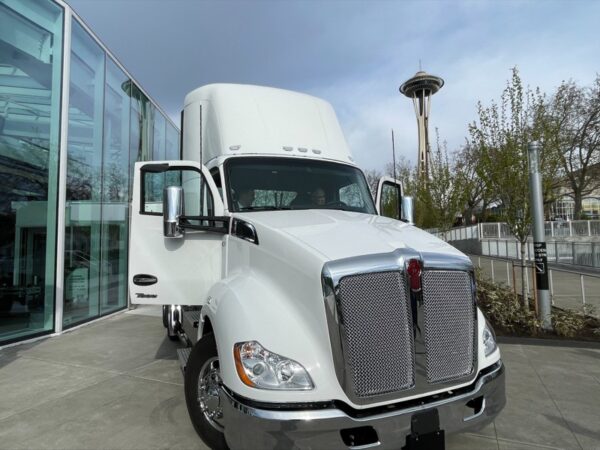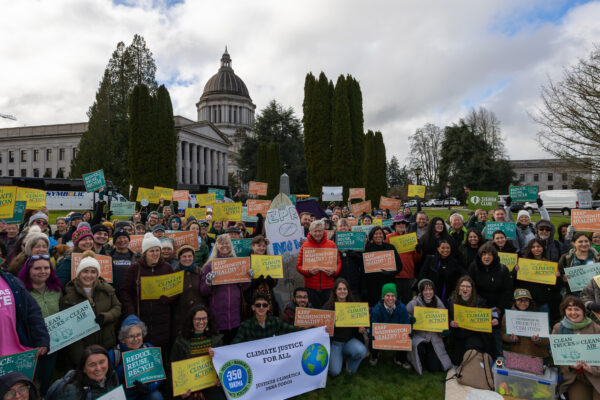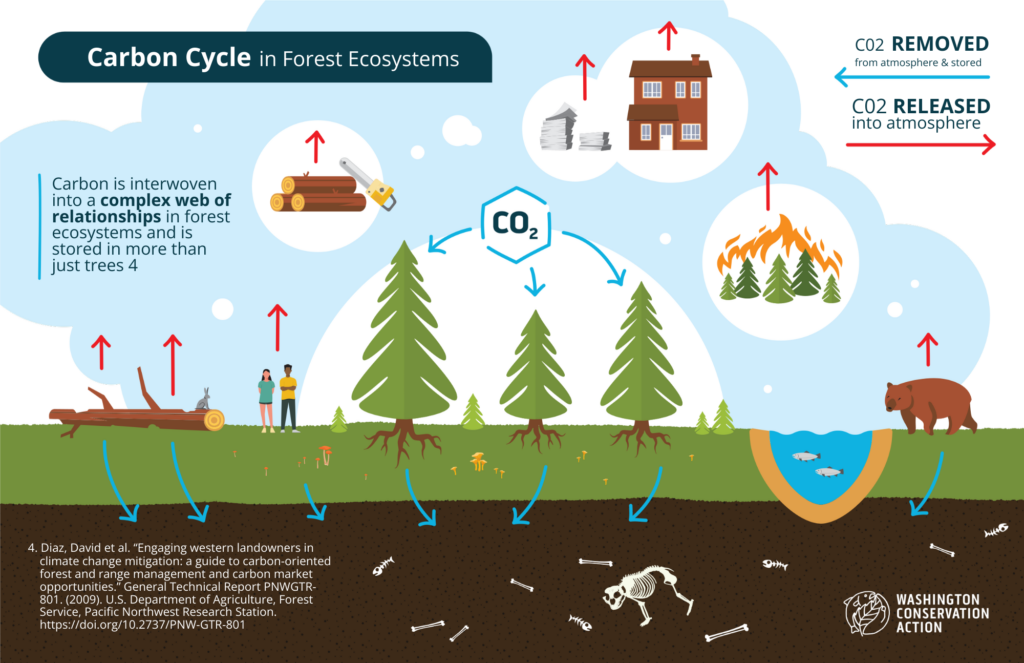
Carbon is part of a complex web of relationships in forest ecosystems. Trees, other plants, soil, microbes, and fungi absorb and remove carbon from the atmosphere. This process is known as carbon sequestration.
Carbon storage is the ongoing process of holding onto carbon in these “sinks” in soil or living organisms. When living organisms die and decay – whether through harvest, wildfire, or reaching the end of their life spans – carbon is released back into the atmosphere. Carbon is also released by humans and other animals as we breathe. Carbon that was stored in wood products, like paper and building materials, release carbon as they decay.
How does managing forests for climate vary across the state?
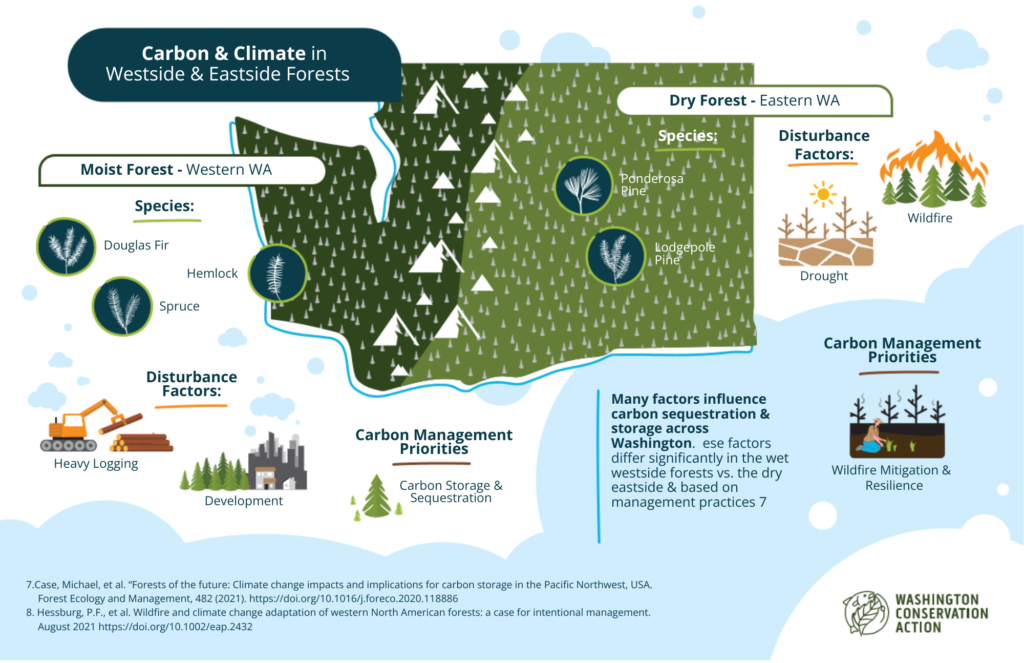
Many factors – including climate, forest type, economic pressures, and ownership – influence carbon sequestration and storage across Washington. The wetter forests on the west side of Washington face different challenges and pressures than the drier forests on the east side of the state. Different forests require different management practices.
Wildfire contributes to, and is made worse by, climate change. The east side of the state naturally sees more wildfire. This means management decisions on the east side might include more prescribed fire and other forest health treatments to help manage for better carbon outcomes – which may often be improved forest health and restoration of natural conditions rather than more carbon storage or . On the west side of the state, forest management strategies can increase carbon in the forest. For example, allowing trees to grow for longer before harvest (extended harvest rotations) enables them to store and sequester more carbon than under a typical scenario, where trees are often harvested at about 40 years.
Why does it matter if we harvest trees sooner – isn’t that carbon still stored in the wood?
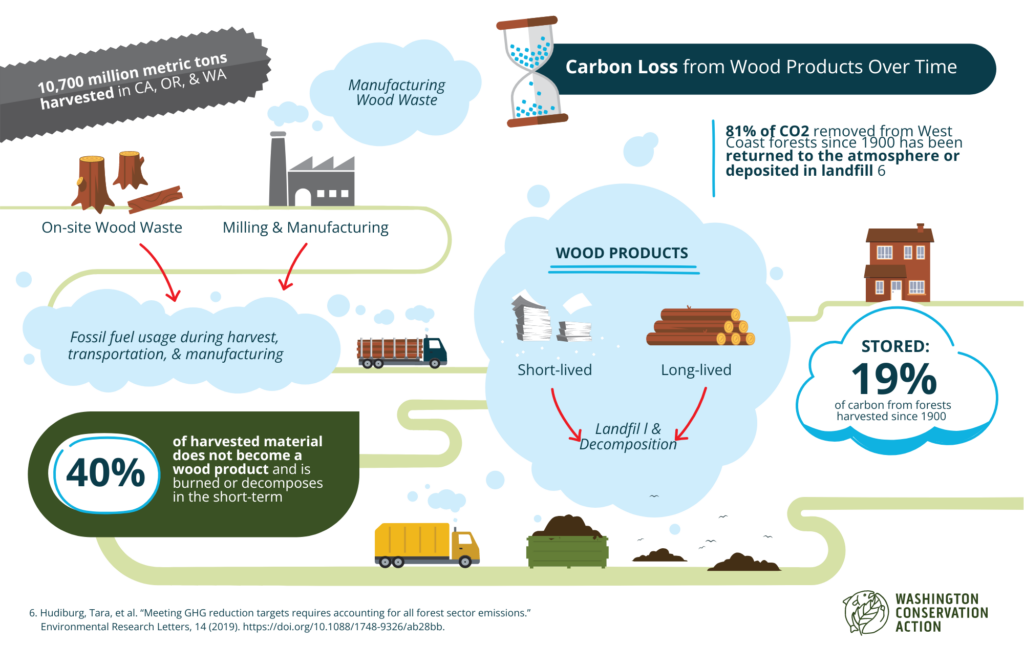
Forests store carbon more effectively than wood products do. Forest products remove carbon from the forest, losing significant carbon in the process, and only store carbon for relatively short time periods before being lost to decay. Transporting wood from forests to mills and manufacturing facilities depends on burning fossil fuels. Carbon is lost as soil is disturbed and branches, needles, and other parts of trees are left behind after harvest. More wood waste and carbon emissions are also created during milling and manufacturing.
Once a product has been created, the carbon is stored for a much shorter time than it does in living trees. Paper has the shortest lifespan, but even wood building materials rarely persist for 50 or more years before decomposing.
Altogether, research shows that of all the CO2 that has been removed from the forests of the West Coast since 1900, 81% has returned to the atmosphere or been deposited in a landfill.
How does this tie into efforts to combat climate change, like the Climate Commitment Act?
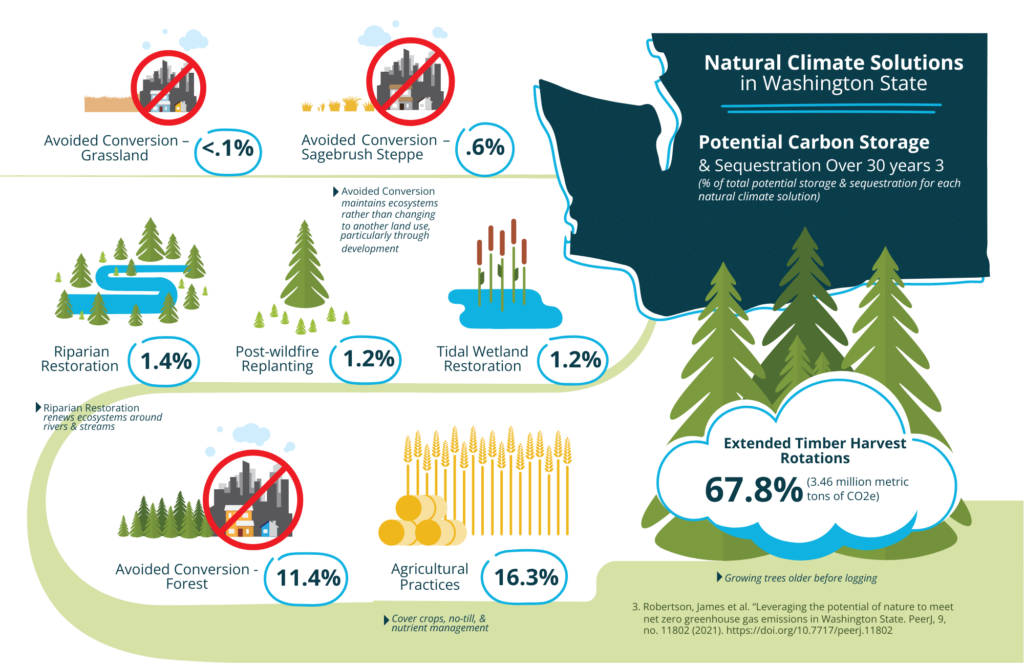
Natural climate solutions are actions that restore and better manage natural systems to store and sequester more carbon. About one-quarter of the proceeds from the Climate Commitment Act are invested in such solutions.
Different natural climate solutions are best suited for different parts of the state. But across the state, growing trees for longer periods between harvest is the strategy that could have the greatest climate impact (68% of natural climate solutions potential).
Putting it all together
Forests play an enormous role in our ability to combat climate change. Climate-smart strategies can make that role even larger, like allowing trees to grow for more years between harvests, retaining more trees during harvest, cultivating a diversity of tree species and ages, or trees alongside streams. If we manage and invest in our forests strategically, they could provide more than two-thirds of our natural climate solutions.
Your donation ensures a sustainable future.

